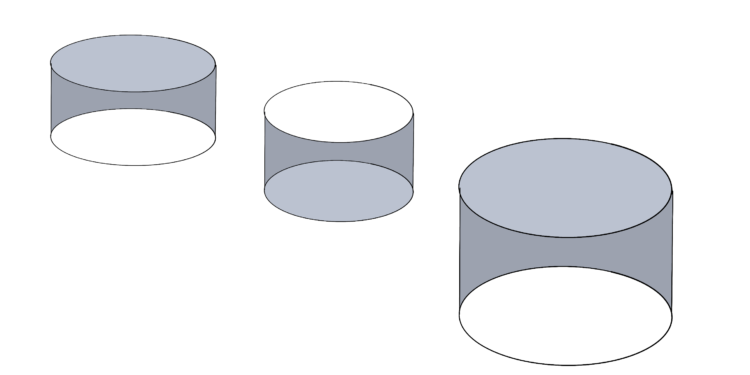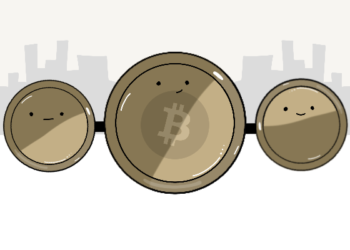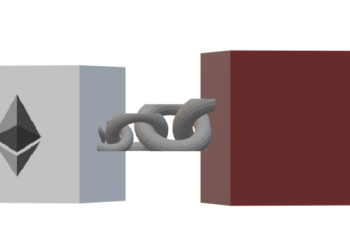Key Takeaways
- The metaverse is an interoperable and immersive virtual world designed for human interaction.
- This 3D internet can be accessed through relevant devices that can output 3D content.
- We can do anything we do today on the internet in the metaverse.
What Is Really the Metaverse?
The metaverse, as envisioned, is a real-time 3D virtual network of worlds that is open, interoperable, and built for human interaction. It is simply the next evolution of the internet, but in 3D.
The concept was first mentioned in a science fiction book by the American author Neal Stephenson and popularized by the blockbuster movie Ready Player One, an adaptation of the book of the same title by Ernest Cline.
While several different DeFi protocols aligned their projects with this vision, it was Meta that, on October 28, 2021, propelled the term into an internet buzzword.
In his criticism of Big Tech’s domineering venture into the metaverse, Vitalik Buterin insisted that the move by institutions to create and control the metaverse would backfire.
“The ‘metaverse’ is going to happen,” he said, “but I don’t think any of the existing corporate attempts to intentionally create the metaverse are going anywhere.”
These ideas have also been echoed by many other industry players, who insist that these ideals are foundational to achieving a true metaverse.
Defining The Metaverse
As of press time, no definitive, universally accepted definition of the metaverse exists, since no one can authoritatively say what will emerge as the true ultimate metaverse.
But if you are asking for the meaning of the metaverse, here is a quick view:
The metaverse is an interconnected network of diverse digital virtual worlds designed for human interaction. You can compare it to a multidimensional, immersive internet. It is a science fiction concept that emerged in the early days of the internet.
This virtual world, however, is still in its hypothetical and infancy stages. While there are disparities and divergent views on what constitutes the ideal metaverse, invested players align around a simple consensus: the metaverse is a virtual world.
But what makes up a true metaverse? What are the indicators of an ideal virtual world that will present the most fulfilling experience? To answer this, we will look at these possible parameters:
Key Concepts of the Metaverse
- Decentralization. The concepts of new internet iterations—whether Web 1.0, 2.0, 3.0, 5.0, or Web X—can all be said to find common ground in data, financial, and identity decentralization.
- Interoperability. To have a fully functional metaverse, it should be interoperable as a cluster of interconnected networks that allow users to freely interact without restrictions.
- Encompassing Experiences. The metaverse will include all things virtual in multidimension. While immersion in relevant scenarios can be crucial to enhance sensory experiences, it is not limited by them. The metaverse is meant to absorb all experiences, realities, and elements of the old internet, both in text and dimension.
- Virtual Worlds. Of course, there is no metaverse without the multiplicity of worlds.
- Decentralized Identity. It should be accessed through a decentralized digital identifier. These must not point back to the identity of the user. As a result, anonymity is necessary—unless the player is comfortable sharing this. Only time will tell how this evolves.
- Tools. The metaverse, as envisioned, will be accessed through multiple tools and devices, much like today’s internet. It will not be limited to select devices. Any tool that enables interaction with this interconnected world of 3D and multidimensional realities is suitable.
How Did the Metaverse Begin?
Disparities exist regarding the origins of the metaverse. While some analysts reference the invention of 3D visual tools like binoculars and stereoscopes, others argue in favor of gaming.
However, no one can pinpoint the exact time for the origin of the metaverse, but it can be narrowed down by historical records from the 1980s, which provide a practical first attempt at how these ideas developed over time.
The history of the metaverse can be traced to gaming, which began around the 1950s, and the quest to create a digital space for human interaction. However, most attempts only became widespread in the 1980s, with some achieving success when the World Wide Web began in the 1990s.
Below are some milestones leading to the development of the metaverse as envisioned:
- 1985. The first virtual world was created by Morningstar and F. Randall Farmer.
- 1986. Lucasfilm Games tested the beta version of Habitat, a multiplayer online virtual environment. In Habitat, users could engage in gaming, business, forming a government, social interaction, marriage, etc. While it didn’t last, it laid the foundation for social media and virtual worlds.
- 1992. Neal Stephenson published Snow Crash, introducing the word “metaverse.”
- 2011. Ernest Cline published Ready Player One, later adapted into a movie by Steven Spielberg.
Who Coined the Word “Metaverse”?
Neal Stephenson was the first to mention the idea of a decentralized, immersive digital space for free interaction. In Snow Crash, he coined the term “metaverse,” finding existing terms like “virtual reality” too awkward for his vision.
Challenges of the Metaverse
The metaverse may not be the utopia promised. Like any new frontier of human evolution, it faces challenges, including:
- Technology lagging behind ideas.
- Mental health, addiction, and abuse concerns.
Who Owns the Metaverse?
No one owns the metaverse. Instead, it is imagined as a network of separate virtual projects and spaces owned by individuals and corporations.
How to Access the Metaverse
The metaverse can be accessed using any hardware capable of experiencing the internet in 3D.
Examples of Metaverse Projects
Some projects and virtual worlds closest to the ideas of the metaverse include:
- Meta’s Horizon Worlds
- Roblox
- Decentraland
- Pokemon Go
- The Sandbox
- Fortnite
- Second Life
Metaverse Companies
Metaverse companies range from older tech giants expanding into the space to startups like Animal Concerts, which brings concerts to virtual worlds. Others are key members of the XR Association.
Conclusion
The metaverse represents the next significant growth of the internet—a multidimensional, immersive space for interaction, innovation, and connection. While still in its infancy, its potential is vast, ranging from redefining social interactions and entertainment to revolutionizing industries like education, healthcare, and commerce.
Achieving the true vision of the metaverse, however, will depend on overcoming technical challenges, ensuring decentralization, and addressing societal concerns such as privacy and mental health. As it continues to evolve, the metaverse offers an exciting glimpse into a future where digital and physical realities seamlessly merge.
Disclaimer: While the ideas of the metaverse are widespread, no holistic standard metaverse exists. We will keep updating information on the metaverse as its development progresses. There are no absolutes, but processes.















